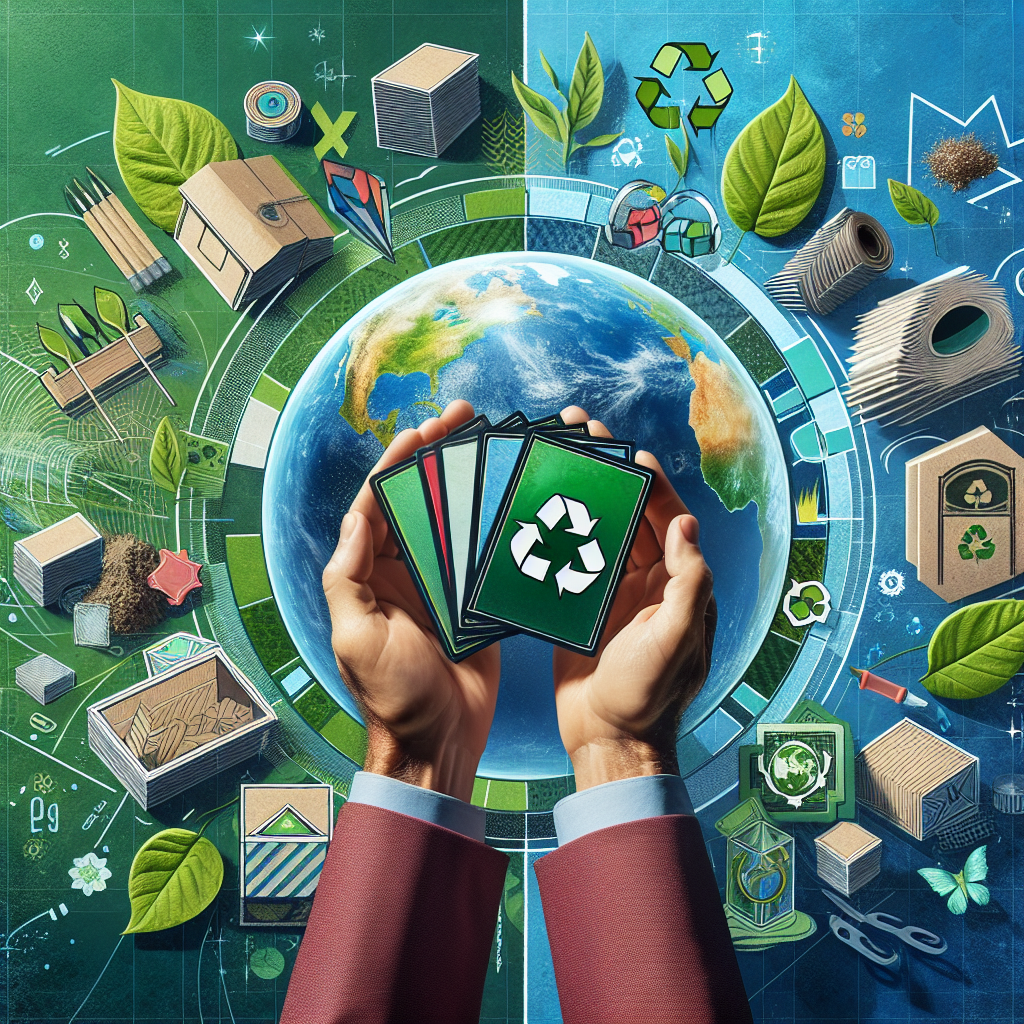Eco-Friendly Gaming: The Push for Sustainable Practices in Collectible Card Game Production
The world of gaming is evolving, driven by a rising awareness of environmental issues and a collective eagerness to embrace more sustainable practices. Among the various gaming genres, collectible card games (CCGs) have seen a significant surge in popularity, captivating millions of players worldwide. However, the environmental impact of card production—stemming from deforestation to excessive waste—has sparked a conversation about the necessity for eco-friendly gaming practices that can shape the future of this beloved hobby.
The Environmental Impact of Traditional Card Production
Collectible card games have traditionally relied on materials such as paper and plastic, which come with substantial ecological footprints. The production of wood pulp for paper involves deforestation, leading to habitat destruction and biodiversity loss. Moreover, the manufacturing processes often entail intense water usage and chemical treatments, exacerbating their environmental toll. Plastic cards, on the other hand, are not biodegradable and contribute to the growing problem of plastic pollution.
As CCGs gained traction, so did concerns over their sustainability. Players—particularly younger generations—are increasingly aware of their environmental footprint and are calling for change. In response, game developers and publishers are rethinking the materials they use, the processes they follow, and the lifecycle of their products.
Sustainable Materials and Production Techniques
The movement towards sustainable practices in CCG production largely revolves around two key areas: the materials used and the methods employed in card manufacturing.
-
Eco-Friendly Materials:
Progressive card game publishers are actively exploring alternative materials that reduce environmental harm. Recycled papers and sustainable sourcing from responsibly managed forests (e.g., Forest Stewardship Council-certified products) are making strides in minimizing deforestation and promoting responsible forestry practices. Additionally, some companies are investigating the use of plant-based inks and coatings, which significantly lower the volatile organic compounds (VOCs) released during production. - Innovative Production Techniques:
Beyond material choices, manufacturers are adopting innovative production techniques to enhance sustainability. This includes optimizing print runs to minimize waste and investing in energy-efficient machinery to reduce carbon emissions. Companies are also exploring digital versions of their games, minimizing the need for physical cards while maintaining gameplay variety.
Community and Player Engagement
The push for eco-friendly gaming isn’t just a behind-the-scenes effort; it also involves grassroots movements within the gaming community. Many players are advocating for sustainable practices, forging a culture of awareness around environmental responsibility. Social media platforms and gaming forums are buzzing with discussions about eco-conscious game designs, prompting developers to listen to their audiences and engage in transparent conversations about sustainability initiatives.
Additionally, some CCGs are taking the initiative to incorporate eco-friendly themes into their gameplay mechanics, thereby raising awareness of environmental issues. By creating narratives that emphasize conservation, biodiversity, and sustainability, game creators are fostering a culture of responsibility among players, allowing them to engage with these themes while enjoying their favorite pastime.
Game Recycling and Waste Reduction
Another significant aspect of promoting sustainability in CCGs is the implementation of recycling and waste reduction programs. Many publishers are establishing take-back initiatives that encourage players to return unused or unwanted cards, which can be refurbished or recycled effectively. Additionally, tournaments and community events focused on responsible gameplay often provide platforms for players to trade, sell, or donate cards, reducing waste and promoting reuse.
Gamers are also being introduced to eco-friendly storage options constructed from sustainable materials, further enhancing the longevity of the products and elevating the overall gaming experience.
Looking Ahead: The Future of Eco-Friendly Gaming
The push for sustainable practices in collectible card game production is not just a trend; it is transforming into a vital movement that acknowledges the responsibility both players and publishers share in protecting the environment. As awareness grows, the demand for eco-friendly gaming solutions will only increase, pushing the industry toward developing more innovative, ethical practices.
In conclusion, the gaming community’s collective response to environmental challenges can drive real change within the industry. By choosing to support brands that prioritize eco-friendly practices, players can play an active role in shaping a sustainable future for collectible card games. As the world embraces sustainability, so too can the world of gaming, ensuring that players enjoy their hobby while contributing to the preservation of our planet for generations to come.




